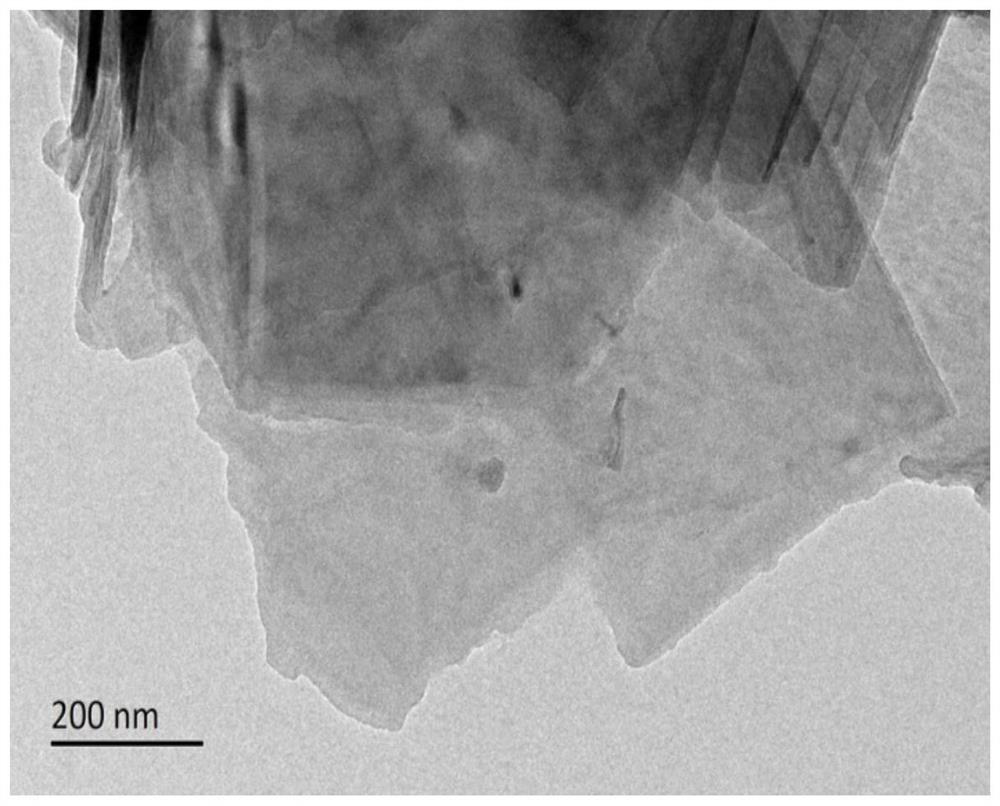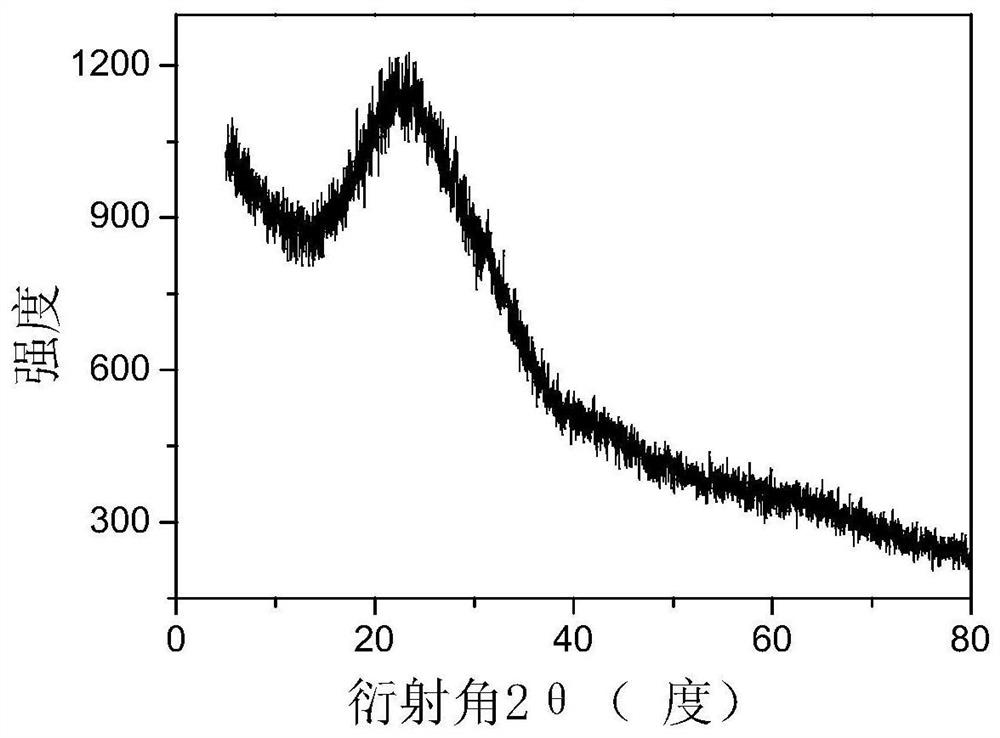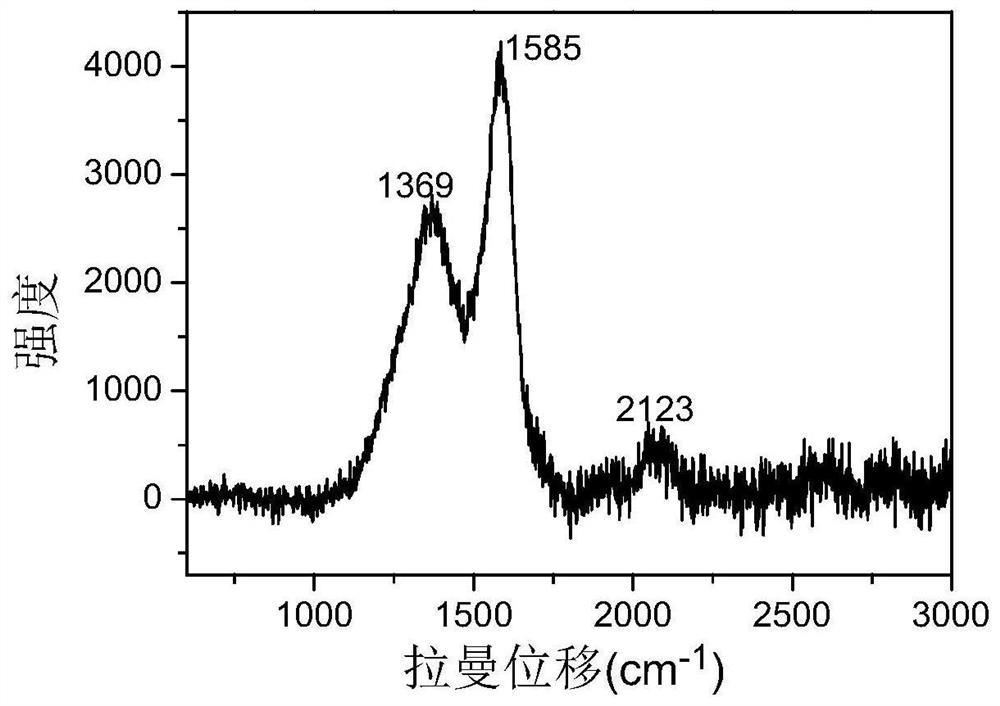Biosensor based on two-dimensional all-carbon nano material graphdiyne and application of biosensor
A biosensor, graphyne technology, applied in the field of biosensors, achieves the effects of good selectivity, high sensitivity, and fast detection speed
- Summary
- Abstract
- Description
- Claims
- Application Information
AI Technical Summary
Problems solved by technology
Method used
Image
Examples
preparation example Construction
[0040] The specific steps of the preparation of the tyrosinase electrochemical biosensor and the detection process of the sample are as follows:
[0041] (a) After graphdiyne is mixed with water, the dispersion system 1 is obtained through ultrasonic pretreatment;
[0042] (b) chitosan is dissolved in 1% acetic acid solution to obtain chitosan solution;
[0043] (c) mixing the graphdiyne dispersion with tyrosinase buffered saline solution, shaking at room temperature for 0.5 hours;
[0044] (d) Add the chitosan solution to the composite material solution formed by graphyne and enzyme molecules and mix evenly, take 5uL of the composite solution containing graphyne-tyrosinase-chitosan (GDY-Tyr-Chi) as drops Add it to the surface of the glassy carbon electrode that has been polished, and let it dry at room temperature to obtain the electrochemical biosensor.
[0045] The graphyne of the present invention is preferably synthesized by chemical in-situ reaction on the surface of t...
Embodiment 1
[0053] Characterization of two-dimensional all-carbon nanomaterial graphyne
[0054] The morphology and structure of graphyne were characterized by TEM, XRD and Raman. figure 1 , figure 2 and image 3 TEM, XRD and Raman spectra of graphyne are given. From figure 1 It can be seen from the TEM image that graphdiyne has a continuous and uniform microstructure of laminated layers. From figure 2 It can be observed from the XRD pattern in the figure that the graphyne sample only has an obvious diffraction peak at 22.4 °, indicating that the graphyne is amorphous. image 3 There are three groups of characteristic peaks in the Raman spectrum in , which are located at 1585 cm -1 The G peak (sp on the benzene ring 2 First-order Raman scattering of hybridized carbon atoms), 1369cm -1 D peak (defect in carbon material), 2123cm -1 peaks (sp hybridized carbon atoms on the alkyne group vibrate), indicating that the carbon in graphyne is only sp and sp 2 Two states of hybridizatio...
Embodiment 2
[0056] Preparation of tyrosinase electrochemical biosensor
[0057] Glassy carbon electrode assembly steps:
[0058] (a) Polish the surface of the glassy carbon electrode with aluminum oxide powders with particle sizes of 1 μm, 0.3 μm, and 0.05 μm in sequence, then repeatedly ultrasonically clean it in absolute ethanol and deionized water, and then clean the surface of the electrode with high-purity nitrogen gas. Blow dry and set aside. Put it into 1 mmol / L potassium ferricyanide / potassium ferrocyanide solution (molar ratio 1:1), and scan the cyclic voltammetry curve between -0.1 and +0.6 V. The redox peak potential difference of the curve is less than 70mV, indicating that the redox reaction on the surface of the glassy carbon electrode is a completely reversible reaction, and the electrode polishing is in good condition, and the next experiment can be carried out.
[0059] (b) Construction of graphyne-tyrosinase composites. After the graphyne was mixed with water, the gra...
PUM
 Login to View More
Login to View More Abstract
Description
Claims
Application Information
 Login to View More
Login to View More - R&D
- Intellectual Property
- Life Sciences
- Materials
- Tech Scout
- Unparalleled Data Quality
- Higher Quality Content
- 60% Fewer Hallucinations
Browse by: Latest US Patents, China's latest patents, Technical Efficacy Thesaurus, Application Domain, Technology Topic, Popular Technical Reports.
© 2025 PatSnap. All rights reserved.Legal|Privacy policy|Modern Slavery Act Transparency Statement|Sitemap|About US| Contact US: help@patsnap.com



